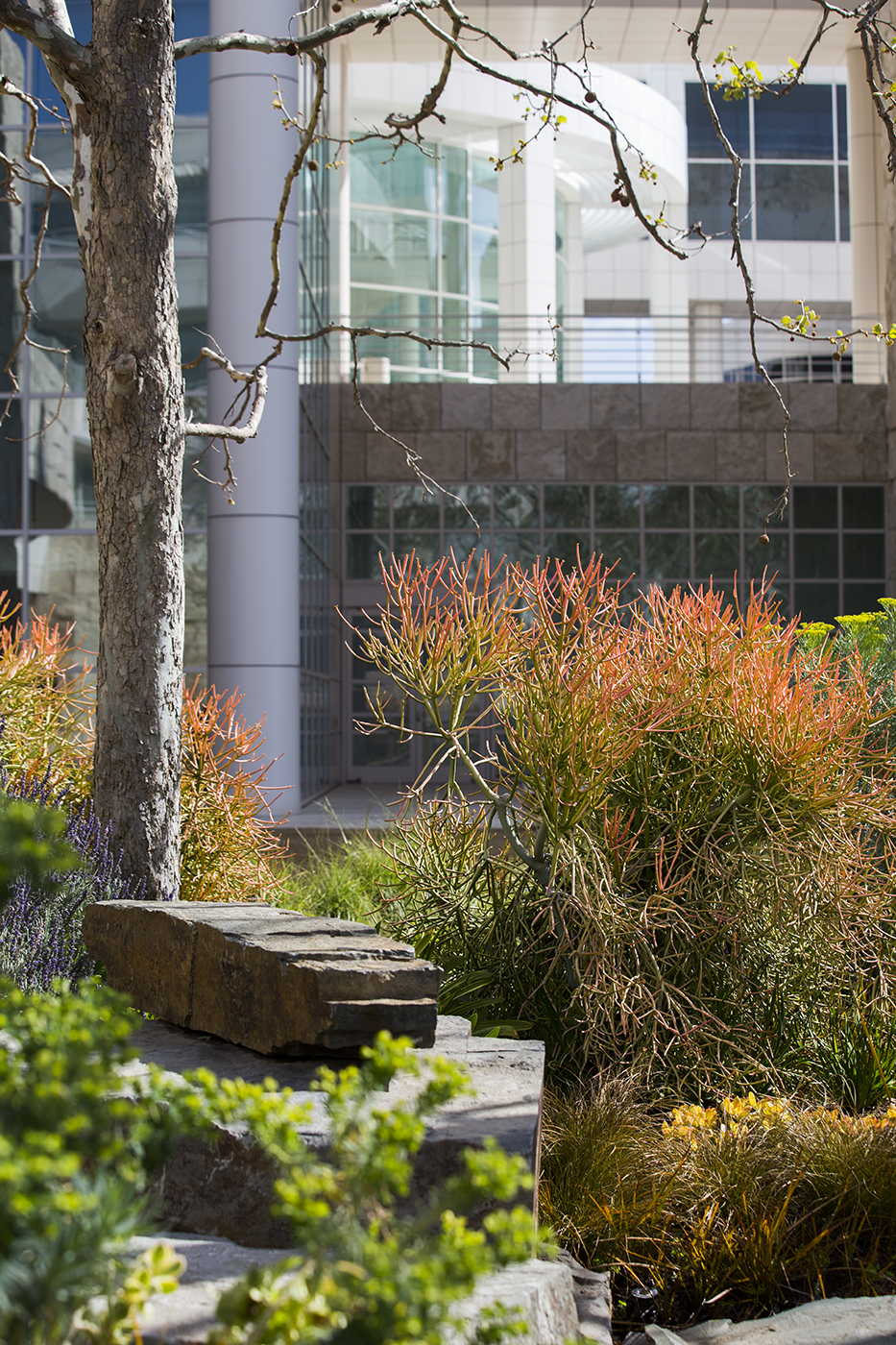
Freshly trimmed “sticks of fire”
Robert Irwin’s Central Garden is a living, changing artwork. The garden has three planting seasons—summer, winter, and spring—and each transforms the look and feel of the space. While shrubs, succulents, and trees always remain, annuals, smaller perennials, and other seasonal plants are added or subtracted for a new look.
Spring is a time to rebalance form and color, trimming back wintry branches and grasses to make room for flowers. I spoke with plantsman Jim Duggan, who has worked on the Irwin garden for some 20 years, about what’s involved and what visitors can look out for in the coming weeks.
Stream Garden Subtlety
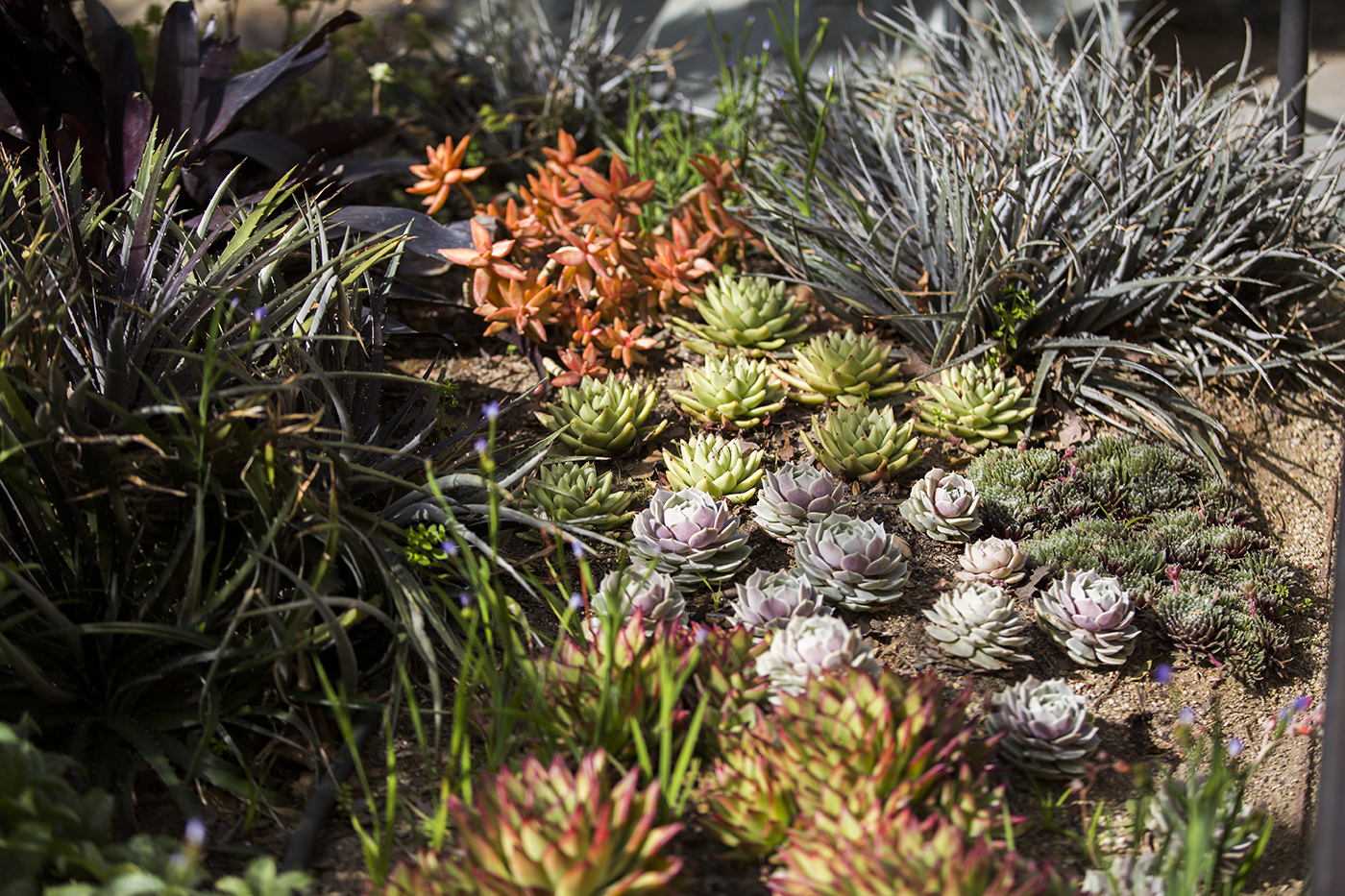
Succulents in the upper stream garden
The Central Garden has two main parts, the stream garden and the bowl garden. The stream garden is a celebration of leaves, while the bowl is a celebration of flowers.
Robert Irwin’s vision, Jim told me, was to have a low-growing, carpetlike effect in the upper part of the stream garden. That’s why you’ll see so many kinds of succulents and grasses here.
Sometimes plants, like these sticks of fire, grow too big to fit into the artist’s concept. That’s where Jim’s pruning—which is a lot like sculpting—comes in. “Cutting back a plant to look natural is one of the hardest things to do,” he said, “but we do it to stay within Robert Irwin’s vision for the Garden, and to make room for other kinds of plants.”
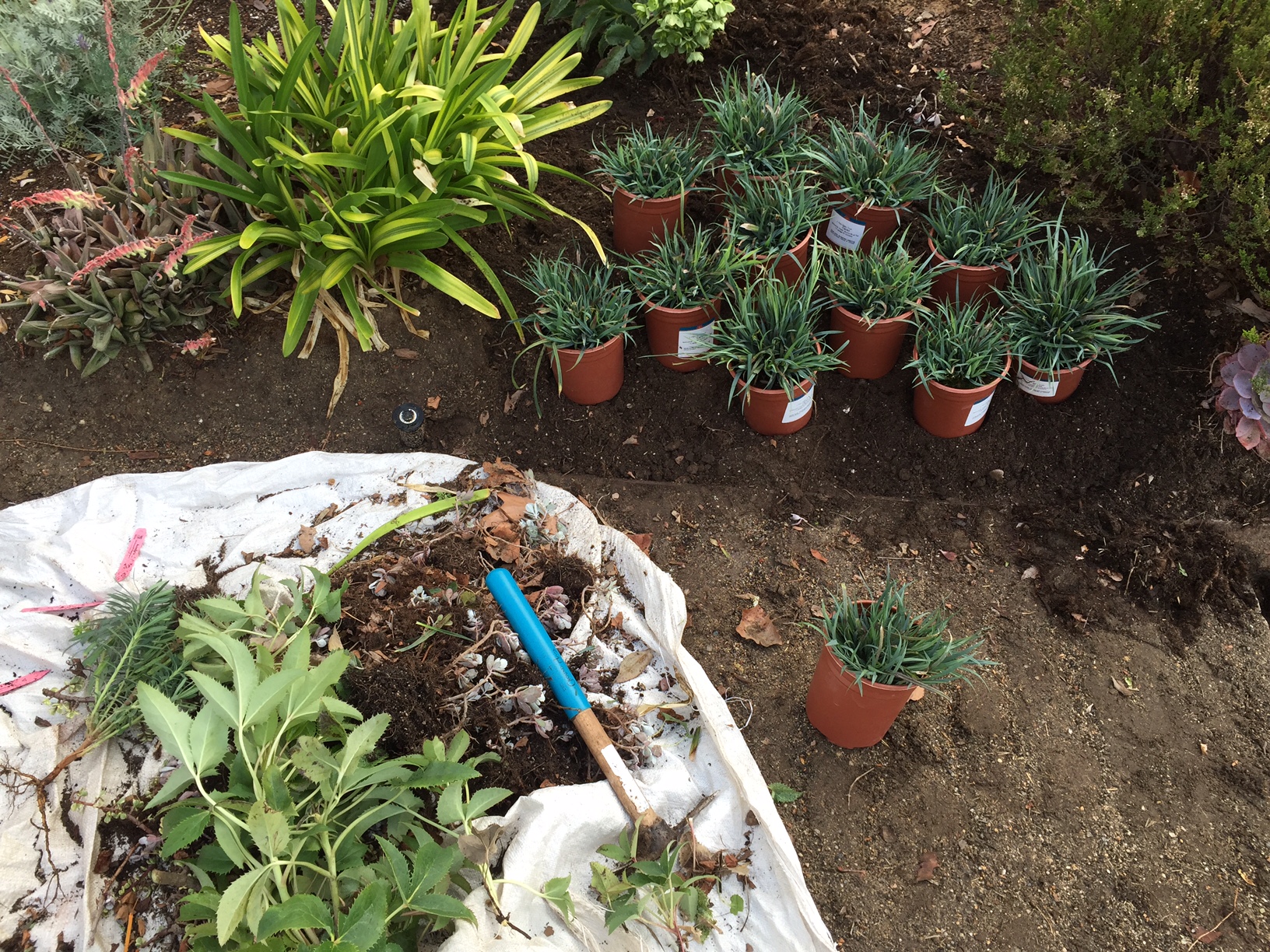
Preparing the carex grass for planting in the upper stream garden
A new plant for the Getty this spring is carex, or sedge (a grasslike plant with shinier and more robust leaves). This carex cultivar has a gray, frosty coloring, a perfect tonal match to the cool tone texture the upper stream garden calls for.
“I’d never seen this carex grass before in my life, it’s such an interesting color,” Jim told me. “One challenge I can forsee is that carex like water, and succulents don’t. We’ll keep an eye on this area to make sure everything stays happy together.”
Kicker Colors
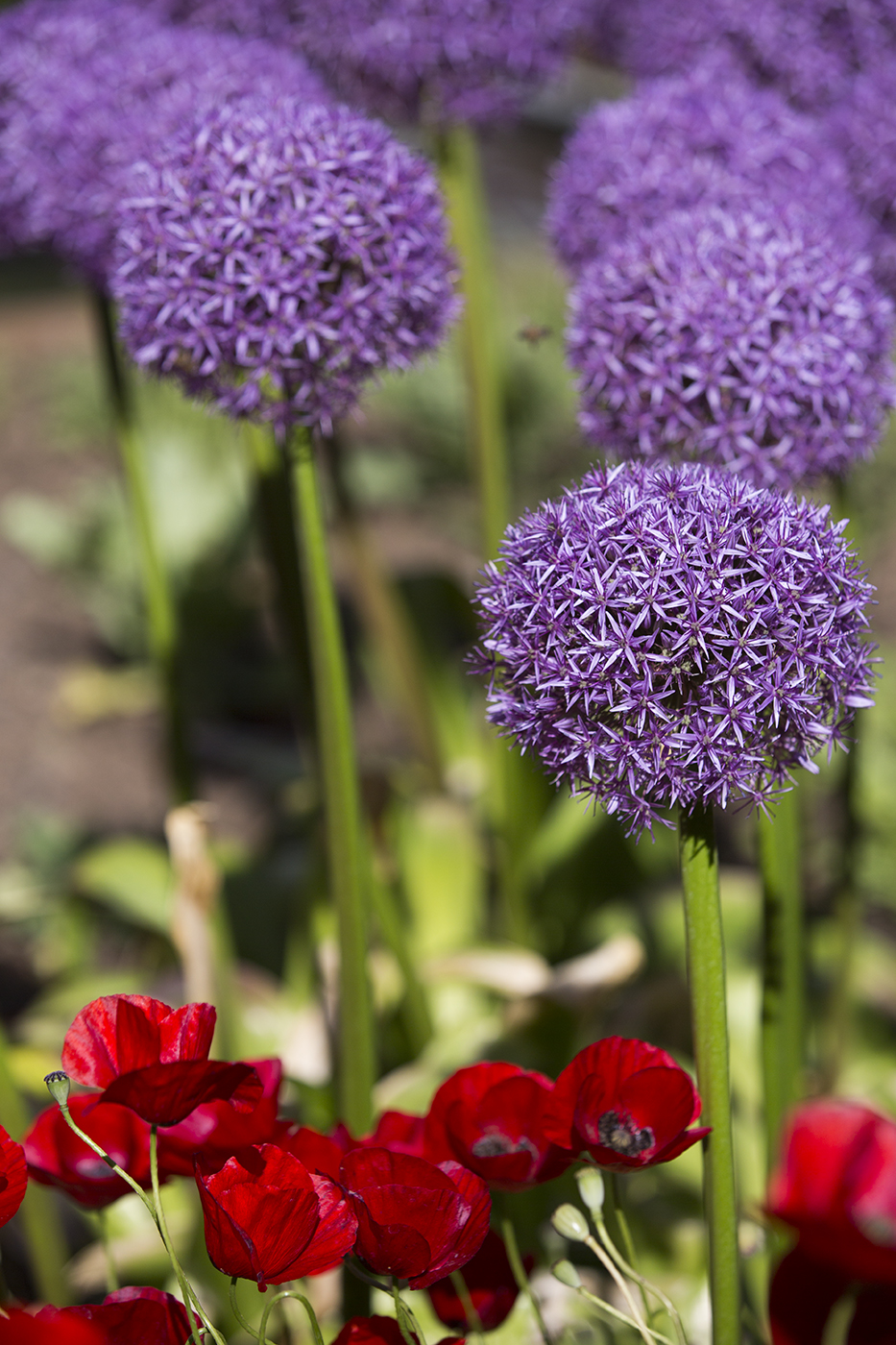
Globemaster alliums and red poppies
Jim told me about a painting that caught his eye at a retrospective of Robert Irwin’s work a few years ago. “It was about 18 inches on either side with heavy gray impasto covering the canvas,” he described, “but in one area he had scraped the impasto away to reveal a bright orange.” A similar effect is revealed in the Central Garden as well.
Irwin believes there are no bad colors—it’s all about how you use them. Many people think orange is a hard color to use, Jim noted, but if you look around the garden, you’ll see it’s one of Irwin’s favorite “kicker colors” to add a delightful pop of color. Some may say purple and red clash, but you’ll find the colors together planted in harmony.
Flowers and foliage with strong reds, oranges, and yellows are preferred over varieties with striped or pastel colors to really punch up vibrancy in the spring.
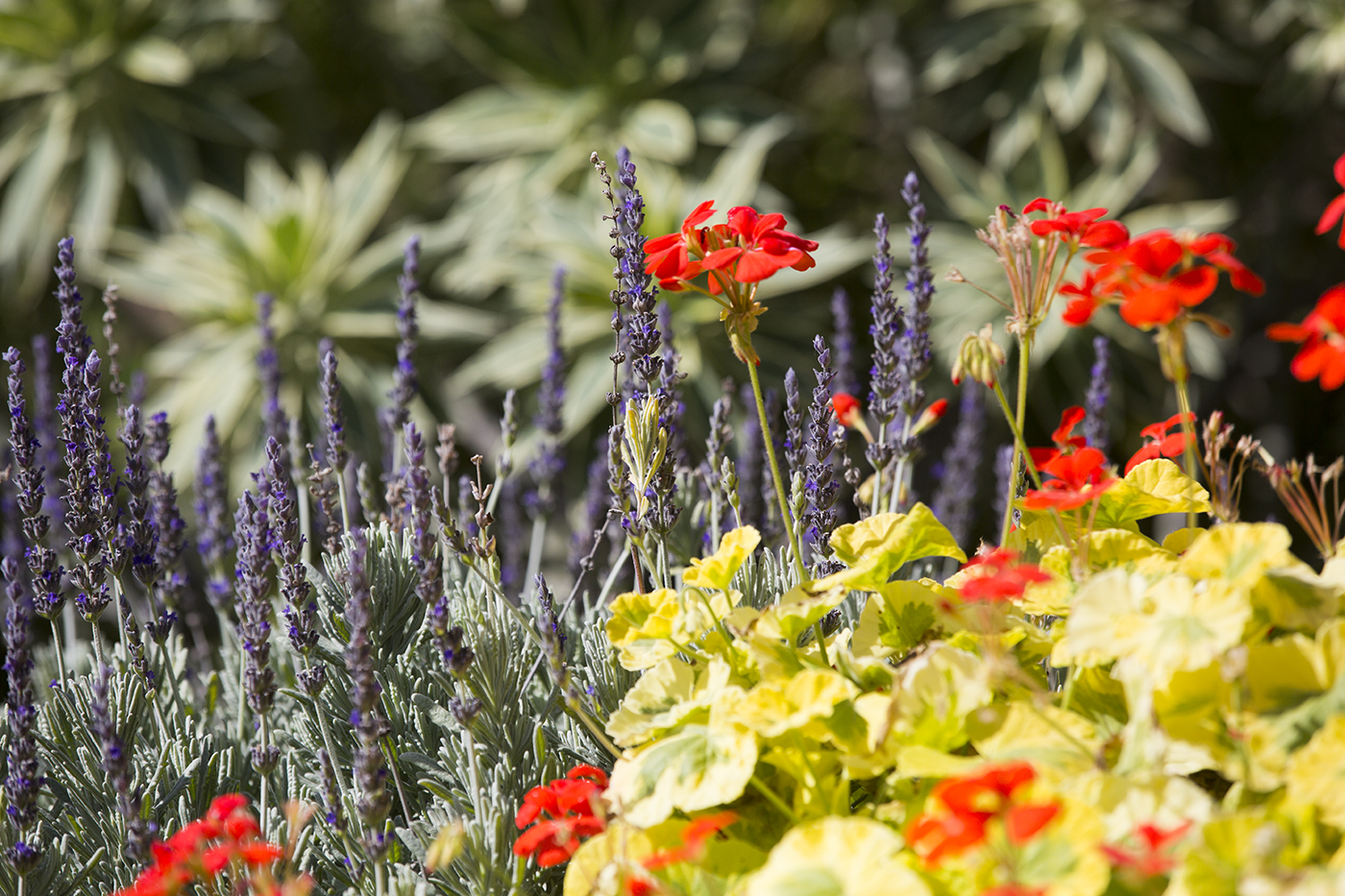
Gray Is the New Green

Lavender planted by the maze in the bowl garden
More California natives have found themselves at home in the garden in recent years. You’ll see tidy tips, cream cups, baby blue eyes, and a mix of colorful poppies. And amongst these flowers, interesting silver and cool-toned foliage adds surprises and contrast.
The garden team goes out on plant-finding missions a few times a year to find new plants that will work within the Central Garden’s aesthetic and are also drought-tolerant.
This year the team is particularly excited to add a silver-leaved form of lavender. “We stumbled across this one and it took our breath away! The flowers are bluer, the leaves are such an interesting color.”
Weeds There, Gems Here
Visitors from Oregon may recognize Fallopia japonica, a plant with speckled leaves and red stems, as a pesky weed in their area. But because of Southern California’s dry climate, it stays well-behaved in the Central Garden.
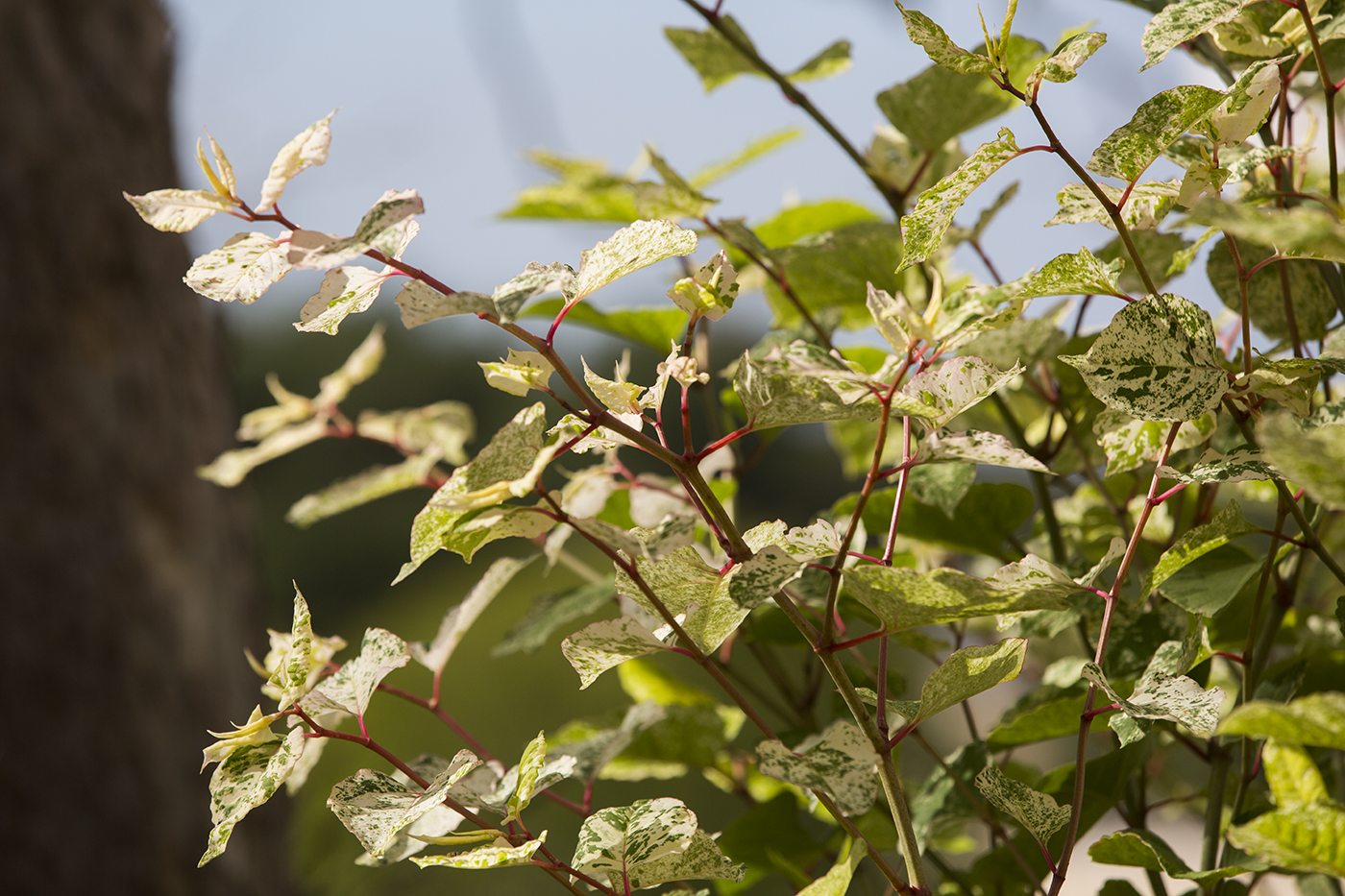
Fallopia japonica planted in the upper stream garden
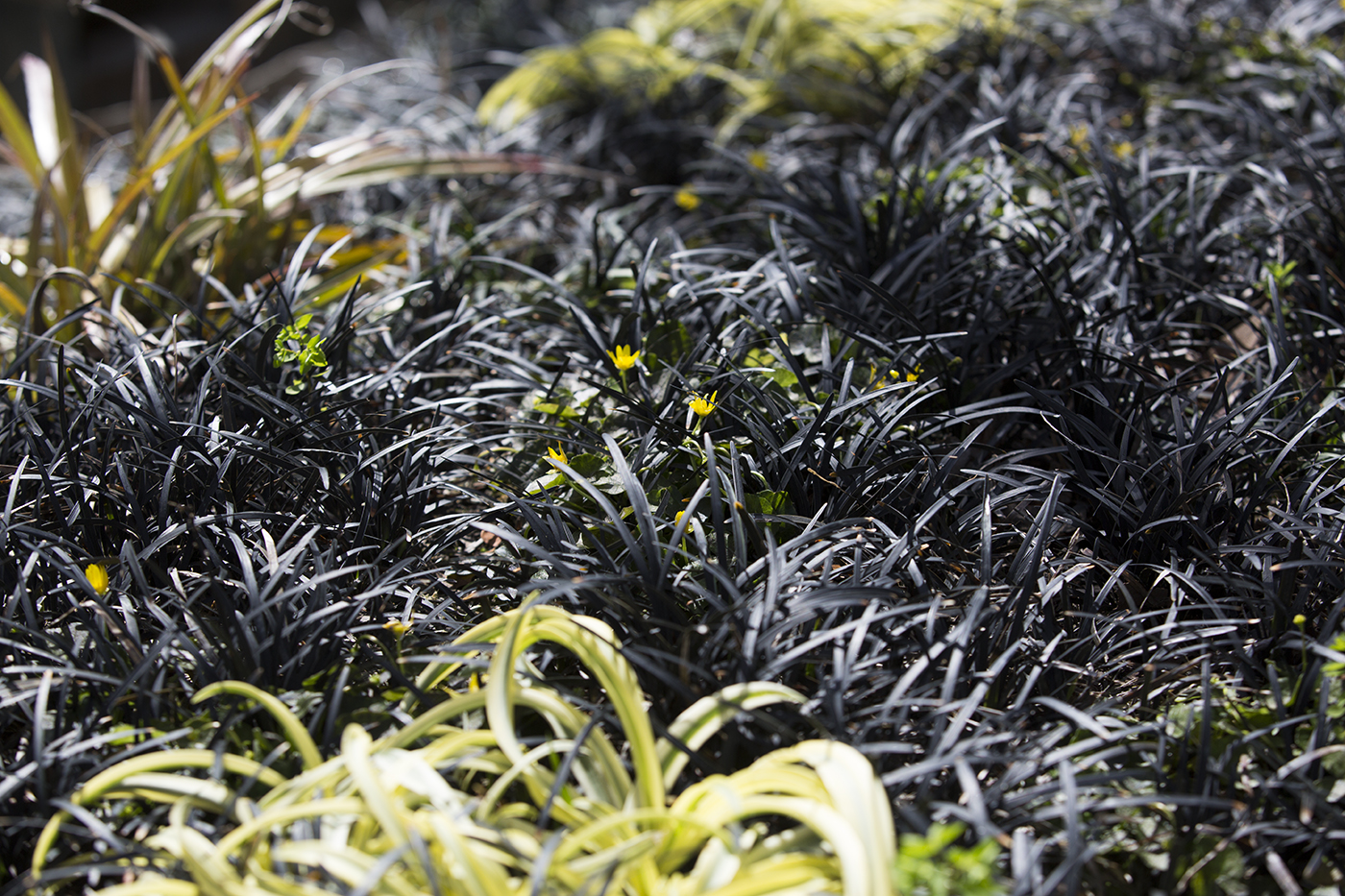
Black mondo grass and yellow Ranunculus flowers
These little yellow flowers are a beautiful kicker color against the black mondo grass foliage, but in many wetter places in the world this Ranunculus cultivar ‘Brazen Hussy’ (yes, that’s its real name!) is a noxious weed that spreads too quickly.
The garden’s motto, imprinted on a stone at the base of the zigzag path, is “always changing, never twice the same.” Still, one of the most frequently asked questions Jim, and the garden staff hears is, “How could you take that beautiful plant out?” Because the garden is a living sculpture, it’s always in flux, with new shapes and colors added. “We use almost any kind of plant as an annual—or really, for its moment,” is how Jim puts it. “Any plant can find its moment in the Central Garden.”



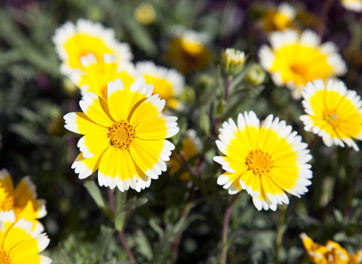
Comments on this post are now closed.